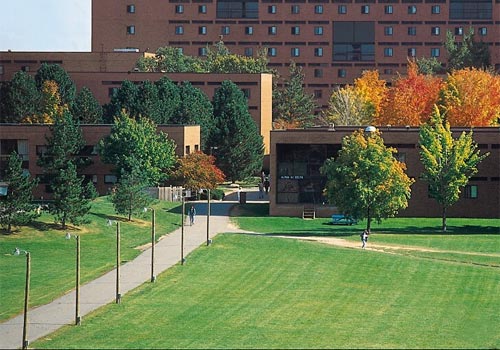Research addresses parks energy conservation issues
Jamie Winebrake and the University-National Park Energy Partnership Program, win 350k grant.
An idea Jamie Winebrake had more than a decade ago while working on energy issues at Shenandoah National Park in Virginia has solidified into a respected national program partnering universities with national parks to address energy-related needs. Now in its 10th year, the University-National Park Energy Partnership Program has leveraged nearly $1.2 million for energy projects in the national parks.
The program has funded nearly 70 projects at more than 30 of the 375 national parks, with the average project costing $15,000. “The goal is to improve the environmental quality of national parks, reduce energy bills and to educate future energy professionals,” says Winebrake, professor and chair of RIT’s science, technology and society/public policy department in the College of Liberal Arts.
Winebrake recently won a $350,000 grant from the National Park Service to continue fostering new energy efficiency and renewable energy projects through the program. He also is one of six members on the National Park Service’s Working Group on Energy and Sustainability. “Our nation’s parks are absolute gems,” he says. “Yet, they contain old buildings and equipment that waste a lot of energy and, therefore, money. These projects uncover energy savings opportunities and help parks implement renewable energy measures that would otherwise be out of reach.” Improving energy efficiency at national parks conserves natural resources and saves tax dollars. At the same time, students gain valuable experience conducting energy audits and data analysis, and finding ways to use alternative energy sources such as solar energy and wind turbines.
The program has funded proposals from all over the country, including from Alaska and Hawaii. Last year, an RIT student worked with professor Carl Lundgren to conduct energy audits and identified energy conservation measures for the Women’s Rights National Historic Site in Seneca Falls. At the completion of each project, the student teams produce detailed reports that are submitted to Terry Brennan, National Parks Service Green Energy Parks Program Coordinator and program co-founder.
The National Park Service will celebrate its centennial in 2016, and sustainability in the parks will be a major theme. “We fit in nicely,” Winebrake says. “They will be coming to us to try to learn to effectively implement sustainability at national parks.”










